
Here’s my review of the Nikon Coolpix S230, an affordable touchscreen digital camera from Nikon. Well, finally I have my review of the Coolpix S230 online. It’s certainly not a great camera, no matter how alluring the sound of a touchscreen camera for two Benjamins is. Have a great weekend, everyone (and look forward to the announcement of several new cameras next week)!
As usual, full-sized photos taken straight out of the camera are available in the Nikon Coolpix S230 photo gallery. Click on the link for the full review of the camera.
DPInterface Nikon Coolpix S230 Review
Brad Soo – August 15th, 2009
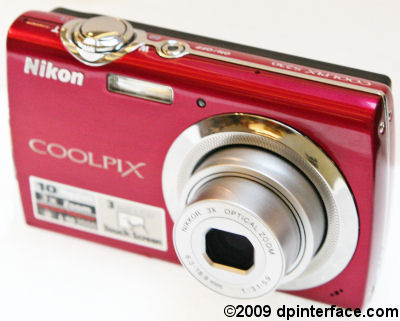
The Coolpix S230 is Nikon’s solution to provide the masses with an affordable point-and-shoot camera which comes with a touchscreen. The S230 has 10 megapixels of resolution, a pedestrian 3X optical zoom lens, 3 inch touchscreen and a slightly tweaked user interface from their previous touch camera, the Coolpix S60. Let’s cut to the chase now and find out more about the Nikon Coolpix S230.
Camera box packaging
The Nikon Coolpix S230 has an average bundle, and comes with a stylus too:
- EN-EL10 Rechargeable lithium-ion battery
- Battery charger
- Wrist strap
- Stylus
- USB cable
- A/V cables
- Camera software CD
- User’s manual
There’s just 44 MB of internal memory that comes with the Nikon Coolpix S230 and no memory card. The camera uses SD/SDHC memory cards and I’d suggest buying a 2 GB card (or more) to get started.
The Nikon Coolpix S230 uses the tiny EN-EL10 lithium-ion battery. Unfortunately, with a tiny battery comes anemic battery life – the camera will only last 160 shots (CIPA Standard) before it runs out, which is below the average of 250 shots for the average compact camera.
Accessories
Nikon doesn’t offer a whole lot of accessories for the Coolpix S230. You can get an optional AC adapter and various camera cases for the camera, but that’s about it.
Camera Tour
The Nikon Coolpix S230 has a standard issue, compact camera design – it’s slim, looks fairly stylish and is decently built (made entirely of plastic). The camera measures 91 x 57 x 20 mm and weighs 115 grams, quite petite as you can see. There’s fairly good ergonomics here with just two physical controls on the back and everything else operated via the camera’s touchscreen. I’m a fan of the S230’s user interface too, which is easy to use and improves slightly upon the one found on the S60.
The Nikon Coolpix S230 comes in your choice of several colors: black, silver, red, dark blue or purple. And as you can tell, this is the silver model.

The Nikon Coolpix S230 has a generic 3X optical zoom lens, equivalent to 36 – 108 mm in 35 mm terms. Unfortunately, the aperture range is ranges from a crummy f3.1 to f5.9, and if you’ve read my reviews of some Olympus FE cameras (which uses this same lens), you’d know I’m not a fan of this lens. The Coolpix S230 does not have any real image stabilization.
Above the lens is the camera’s self-timer lamp and built-in flash. The flash isn’t very strong – its 3 meter range is just ‘fair’ as far as compact cameras go. To the lower right side of the camera, you’ll spot three little holes – this is where the microphone is located.
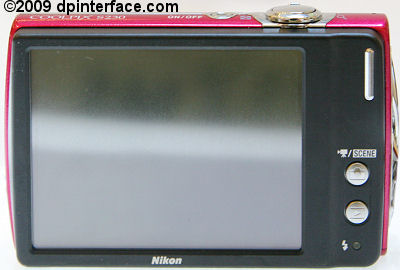
The Nikon Coolpix S230 has a 3 inch touchscreen LCD with 230,000 pixels. The screen has just average visibility in bright light, and things are slightly better in low-light. Well, at least the touchscreen here is responsive and you won’t find yourself having to ‘press’ hard on the on-screen icons for something to happen.

The Nikon Coolpix S230 is operated almost entirely via its touchscreen. There are five main on-screen icons and using the camera is pretty straightforward:
- Self timer (Off, 2 seconds, 10 seconds)
- Flash setting (Auto, auto with red-eye reduction, off, on, slow sync)
- Focus mode (Normal, macro, infinity)
- DISPLAY – toggle on-screen information
On the right side of the camera are two buttons (that long silver piece is just there for aesthetic purposes). They are the shooting mode and playback buttons respectively. Pressing the Shooting Mode button brings up a mode screen where you can switch to any of these modes:
- Program mode
- Scene modes – Portrait, landscape, sports, night portrait, party, beach/snow, sunset, twilight, night landscape, close-up, food, museum, fireworks, copy, backlight, voice recording, panorama assist, handwritten memo
- Auto scene selection – automatically picks out a scene mode and camera settings for you
- Movie mode – more on this later
At the very bottom of the camera is the flash status LED.
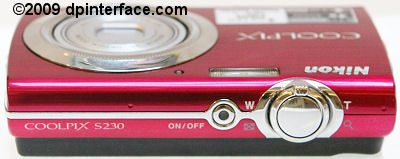
There’s nothing particularly special up here – all that you’ll find is the power button and shutter button with a zoom controller wrapped around it.
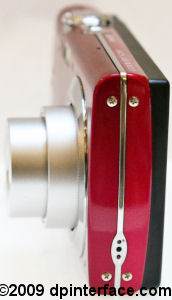
If you look lower down the chrome strip here, you’ll spot the Coolpix S230’s speaker.
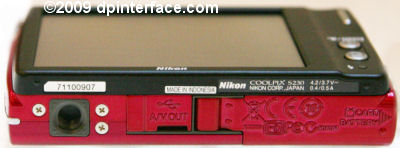
At the bottom of the Nikon Coolpix S230 are its battery/memory card compartment, single connectivity port (under the tiny cover next to the battery/memory compartment) and tripod mount. The connectivity port (hidden under the cover labeled ‘A/V Out’) is the place to connect the camera’s USB and A/V Out cables.
Taking pictures (Shooting mode)
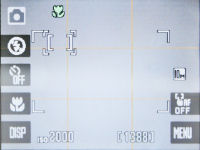
The Nikon Coolpix S230 displays some shooting information, compositional gridlines and a zoom indicator (when you use the zoom controller) on its display, but not much else. Let’s see what the Coolpix S230 lacks: exposure info, a live histogram and a battery indicator.
One cool thing about the Nikon S230 is that you can ‘touch’ any part of the screen to instantly switch to Touch AF and focus on that specific spot.
The Nikon Coolpix S230 offers a few image resolution choices (and they are: 10 MP, 5 MP, 3 MP, 2 MP, 1 MP, VGA and widescreen (7 MP)). As with Nikon’s other Coolpix cameras, image quality (High or Normal) is only selectable if you are using the 12 megapixel setting… the default compression setting for lower resolutions is “Normal†quality.
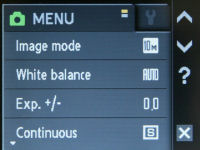
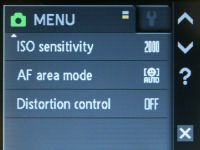
The Coolpix S230 features Nikon’s touchscreen user interface, which is fairly intuitive with large (finger friendly) and clearly labeled menu options:
- Image resolution setting
- White balance (Auto, daylight, incandescent, fluorescent, cloudy, flash, custom)
- Exposure compensation (+/-2 EV in 1/3 step increments)
- Continuous mode (Single shot, continuous shooting, Best Shot Selector, multi-shot 16, interval shooting)
- ISO sensitivity (Auto, High Sensitivity, 80, 100, 200, 400, 800, 1600, 2000)
- Focus area (Face detection, auto, center point)
- Distortion control On/Off – for reducing lens distortion in photos
Over here, we have the usual Best Shot Selector takes up to 10 pictures in a row before the camera selects the best/sharpest one from the bunch. Multi-shot 16 takes sixteen small pictures in a row and combines them to form a single 10 megapixel collage. The most interesting of them all is the Coolpix S230’s interval shooting feature, which allows you to setup the camera to take photos at preset intervals (an AC adapter is recommended here).
There’s also Motion Detection, which is activated via the setup menu, where the camera will look at the scene and automatically set ISO based on the amount of action going on (a still scene prompts the camera to choose a low ISO value, while ISO will be increased when there’s a lot of movement in the frame). The setup menu also contains other things such as setup of multiple time zones, date and time.
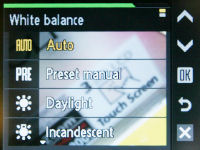
The Nikon Coolpix S230 has a menu option that allows you to set custom white balance (Called Preset Manual), but that’s not the main thing I want to show here. The real deal here is the transparent menu overlay which allows you to ‘preview’ the effects of different camera settings as you select them (such as white balance and exposure)
Smart Portrait system
The Coolpix S230 features Nikon’s Smart Portrait system, which includes face detection (up to 12 faces), software-based redeye removal, D-Lighting (brighten dark areas of photos), Smile detection (the camera takes a picture automatically when a smile is detected) and Blink Proof. Blink Proof mode actually combines smile detection with blink detection; and will take two pictures when a smile is detected, saving the photo where your subject(s) had their eyes open.
Macro mode
The Nikon Coolpix S230 has a so-so macro mode that doesn’t get you very close to your subject. The camera’s minimum focusing distance in macro mode is 10 cm from your subject, and you can use a bit of optical zoom to go slightly closer.
Video Recording
The Nikon Coolpix S230 has a VGA movie mode. You can record 640 x 480 movie clips at 30 FPS with sound, up to 2 GB per movie clip. You can extend recording times by lowering the frame rate to 15 FPS, decreasing resolution to QVGA (320 x 240) or both. All movies are recorded in AVI Motion JPEG format.
You cannot zoom or focus while recording video clips but there’s electronic image stabilization available to help reduce jitter, at the cost of quality and field of view. Video quality was acceptable but audio was out of sync yet AGAIN (earth to Nikon… hello? Fix this, please!).
Performance
All performance testing of the Nikon Coolpix S230 was performed using a high-speed 4 GB SanDisk Ultra II SDHC (90X) card.
The Nikon Coolpix S230 boots up in an average 2 seconds. Autofocus here wasn’t that great as the camera takes 0.4 to 0.8 seconds on average to focus outdoors and failed to focus completely in low-light.
- Shot-to-shot speed - 1 shot every 2.1 seconds
- Flash recharge time using a fully charged battery - 4 seconds
The Nikon Coolpix S230 has a decent continuous shooting mode that’s capable of shooting at 1.2 frames per second up to about 20 pictures. Performance here wasn’t that fantastic on the Coolpix S230, just average speeds that will probably get you through the occasional picture, but certainly not for action or spur-of-the-moment shooting.
Image Quality
Moving on, we’re gonna look at the Coolpix S230’s image quality now:







The Nikon Coolpix S230 starts out producing clean (but soft) looking photos at ISO 80 and 100. Things are almost the same at ISO 200 but there’s a big jump in smudging and softness as we approach ISO 400. One thing that surprised me, however, is the nicely saturated images the camera produced along with good color accuracy.
Noise goes up significantly at ISO 800, and there’s still plenty of detail smudging going on here. And I certainly won’t go above ISO 800, because ISO 1600 is extremely noisy and ISO 2000 is just… yuck.

There was mild lens distortion with the Coolpix S230 along with plenty of color fringing (chromatic aberration) and visible corner softness. I’m definitely not a big fan of the 36-108 mm, f3.1-f5.9 lens on the Coolpix S230 – softness, lens aberrations and nothing positive to note about it. I’ve seen its mediocrity before on Olympus’ cheap cameras and the lens isn’t any better here, even when rebranded as a Nikkor lens.
Probably the only two good image quality traits possessed by the Nikon Coolpix S230 are good color accuracy and clean images up till ISO 200. From there on and in other aspects of image quality (*ahem* lens performance *ahem*), everything’s pretty much below average and you can find cameras that do better out there.
Photo gallery
Want some full-sized photos taken straight out of the camera? Visit the Nikon Coolpix S230 photo gallery!
Playback
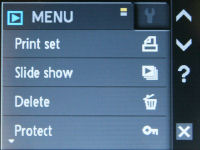
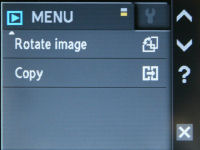
The Nikon Coolpix S230 has a playback mode that features many image retouch functions. First off, there’s print marking, slideshow, image protection, rotation and copying between the internal memory/memory card. Photos can be enlarged by 10X for detail inspection and can also be tagged as your “favoritesâ€.
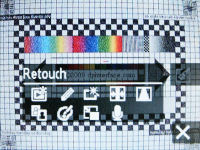
The Coolpix S230 has a bunch of Retouch features, which include the ability to draw and paint on photos (via the touchscreen), attach audio clips to photos, resize and ‘slim down’/compress pictures. There’s also keystone correction (perspective correction) used when you didn’t take a picture of something head-on (ie a classroom blackboard or tall building) and want to ‘even’ things out. Finally, D-Lighting gives you the ability to brighten dark areas of your photos.
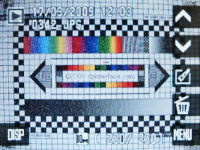
The Nikon Coolpix S230 doesn’t tell you anything about your photos - no shooting details, no exposure info, no histogram, nothing. Sad, isn’t it?
Conclusion
It’s probably the only camera in the ‘entry-level’/budget group with a touchscreen: it’s the Nikon Coolpix S230. The Coolpix S230 is a 10 megapixel, ultra-slim camera that packs a 3X optical zoom lens and 3 inch touchscreen. And it’s priced at $200, about half the price of other full-fledged touchscreen cameras on the market.
The Coolpix S230’s 3 inch touchscreen is responsive and Nikon’s touch interface is intuitive with large, clearly labeled icons and straightforward operation. There’s plenty of room between icons, making finger-based operation easy.
Unfortunately, Nikon did cut a few corners with this budget touchscreen camera. For starters, Nikon probably thought the market of the S230 would just be the ‘snap happy’ crowd, and so, the camera doesn’t show much information on-screen. The camera also has below average battery life and lack of any sort of image stabilization. The movie audio sync issue that’s been ever-present on Nikon’s modern cameras is here too.
The Coolpix S230 produces (just) acceptable image quality for mid-size prints, that is, if you shoot outdoors at low ISO. Otherwise, images are plagued with color fringing (chromatic aberration), softness and smudging.
Bottom line is, if you need a camera which takes good pictures, you mind as well seek out other budget cameras which produce better image quality. The Coolpix S230 is cheaper than other touchscreen cameras but I don’t think it’s worth the sacrifice in feature set and image quality (actually I blame it on the el-cheapo lens, but that doesn’t change things much) JUST for the sake of a fancy touchscreen.
What’s hot:
- Decent image quality till ISO 200 for medium sized prints
- Slim design and affordable price
- Responsive 3 inch touchscreen display
- Nice, well-implemented touchscreen interface
- Smart Portrait, motion detection and auto scene selection features
- Lots of playback Retouch tools
What’s not:
- Cheap lens with below average sharpness and a lot of color fringing (chromatic aberration)
- Camera doesn’t show a lot of information in shooting/playback
- Crummy low-light autofocus
- Lacks real image stabilization
- Below average battery life
- Movie audio sync problems
Recommended Accessories:
- 2 GB SD memory card
- Extra lithium-ion rechargeable battery

Actually i am not a photography professional.i had been to need a “not too bad or not too good” camera . I think cool pix was good for my label. but its picture quality at low daylight without flash is too poor.i also compare with sony 10mp camera but without flash at normal daylight in the room, picture quality of sony is best and glossy.In that case i also prefer for sony.
nikon coolpix S203 how much is the memory card is extendable upto?
Up to 32 GB SDHC cards.
I asked a simple question on how change the time and date on a nikon s230. All i got was a lot of junk. Also i would like to know how i can get a camera software cd and a owners manual
I used s230 and am not satisfied with it. Can you name a camera with good image stabilization and better lens in the same price range? (i am a noob)